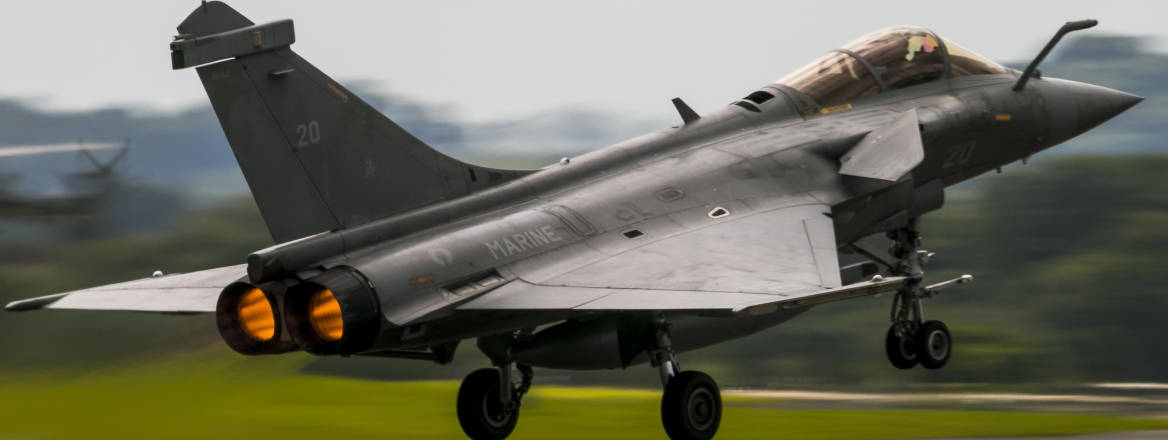Constants and Changes in France’s Arms Export Strategy
The latest report on France’s arms sales highlights some fundamental reorientations in the country’s markets.
The French government recently released an important report on its arms exports during the last year. The document offers a good level of transparency: it depicts how France, as a mid-size power with a long tradition of national defence industries, addresses some of its strategic priorities in a fast-changing international security environment and the worldwide increase of defence expenditure. France was the third-largest exporter of weapons in the world between 2015–19, but the geographic distribution of its arms exports has significantly evolved.
Europe as a Growing Customer Base
One of the main conclusions from France’s 2019 performance is that French arms exports have been much more Europe-oriented than in previous years, with noticeable contracts with Belgium (naval mine warfare), Spain (communication satellites) and Hungary (helicopters). The European market amounted to 45% of French arms exports last year compared to only 25% in 2018. This trend might be confirmed in 2020 with other significant pending contracts like the purchase of six Rafale jets by Greece (plus 12 second-hand Rafale jets delivered from the French Air Force’s fleet which will be itself completed). Outside Europe, Australia and the UAE (the Gowind-class frigates) have been the most important clients of the French defence industry in 2019.
Last year, the naval sector noticeably benefited from a sharp increase in – and now amounts to half of – the total French armament exports, reflecting the rising importance of the oceans as a key and disputed global common in states’ strategies.
France’s Export Pillars
The report identifies a French armament defence policy which stands on three pillars:
- A win-win logic consisting of answering France’s partners’ requirements on defence procurement as this cooperation reinforces its security.
- Full compliance with France’s international commitments on arms control.
- Keeping the performance of France and Europe’s defence industries consistent with France’s strategic ambitions.
Consistent with France’s 2017 defence and national security strategic review, this policy is a key component – as well as an enabler – of the 2019–25 military bill.
One of France’s most recent regional strategies focuses on the Indo-Pacific region, where it has strategic interests given its Indian and Pacific Ocean territories and vast exclusive economic zones. More specifically in this region, the Strategic Partnership with Australia must be noticed. It includes the 2016 Attack-class submarine programme – 12 ships based on the French Barracuda-class design for a cost of €34 billion – divided into several tranches and whose conceptual and framework agreements were signed in 2019.
In the same region, the first five of 36 Rafale jets have just been delivered to the Indian Air Force in the context of increased tensions between Beijing and New Delhi.
The shift to the European market and the growing importance of the strategic partnerships in the Indo-Pacific region in 2019 contrast with the decline of arms exports by France to Africa and, above all, the Middle East. Indeed, some historic clients of the French defence industry like Egypt, Saudi Arabia and Qatar are less prominent in the 2019 export results than in previous years.
However, arms exports to partner countries aimed at preserving regional stability and fighting terrorism remain another significant component of France’s arms export strategy. This approach applies mostly to some Middle Eastern (such as Lebanon) and G5 Sahel countries.
Of course, the international arms control and non-proliferation frameworks (international conventions, treaties and regimes, UN embargos, EU sanctions) are inseparable from how France approaches its arms export policy. Within the entire arms control ecosystem, the global 2013 Arms Trade Treaty governing conventional weapon exports has specific importance for France. Finally, the EU’s developing jurisdiction also contributes to shaping France’s arms export policy. One of the most emblematic EU regulations is the European Code of Conduct on Arms Exports, requiring member states to assess any arms export demand through eight common criteria listed in the Common Council Position 2008/944/CSFP.
Yet the main driver for France’s arms export strategy is the key contribution of the French defence industries to the country’s strategic autonomy and European defence development. Indeed, for France, the role of arms export is paramount to consolidate national research and the industrial capacity to develop, produce and upgrade a large range of military equipment. The amount of national procurement alone would not suffice to maintain some very strategic production lines.
Finally, the 2019 report also highlights how the development of a European defence, with a strong Franco–German axis, is inseparable from Europe’s capacity to export beyond its internal defence market. The new European defence toolbox of Permanent Structured Cooperation and the European Defence Fund (EDF) are expected to support this objective. Indeed, one of the most sensitive components of the new EDF managed by the European Commission will be its export-related dimension. But viewed from Paris, it is paramount that the possibility to export military capabilities that have been developed in cooperation with other European partners with the support of the EDF would not be hampered by restrictions tougher than the already strict arms control ecosystem followed by France.
The rise of European countries’ defence expenses, combined with the much-discussed idea of European strategic autonomy now slowly taking roots, might confirm in the coming years the 2019 trends in arms export for the French defence industries.
Table: France's Top 20 Defence Customers
| Country | Concluded Defence Sales Contracts, 2010–19, in Millions of Constant € |
|---|---|
| India | 13,380.1 |
| Qatar | 11,054.2 |
| Saudi Arabia | 10,732.7 |
| Egypt | 7,686.9 |
| UAE | 4,736.1 |
| Belgium | 3,147.2 |
| USA | 2,355.3 |
| Singapore | 1,868.6 |
| Kuwait | 1,755.5 |
| Malaysia | 1,721.1 |
| South Korea | 1,650.6 |
| Indonesia | 1,622.4 |
| Russia | 1,390.0 |
| Spain | 1,375.2 |
| Brazil | 1,316.3 |
| UK | 1,261.8 |
| Australia | 1,181.2 |
| China | 1,159.9 |
| Germany | 1,092.3 |
| Morocco | 984.9 |
Source: French Ministry of the Armed Forces, Rapport au Parlement sur les exportations d’armement de la France (Paris: French Ministry of the Armed Forces, June 2020), pp. 62–65.
The views expressed in this Commentary are the author's, and do not represent those of RUSI or any other institution.
WRITTEN BY
Vice Admiral Patrick Chevallereau
Distinguished Fellow


